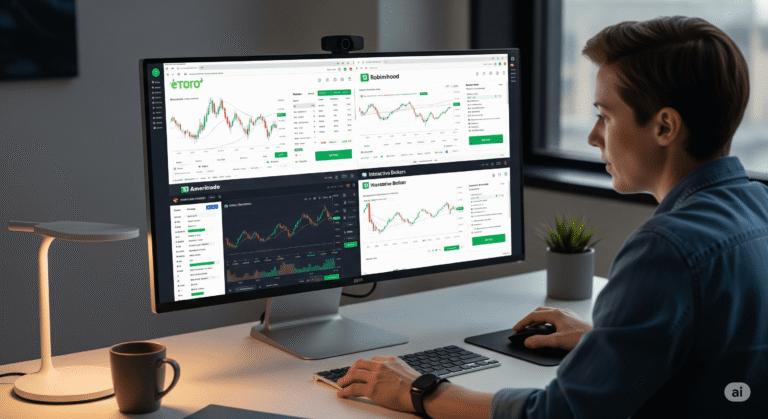Trading, while offering the potential for significant financial gain, also comes with a number of inherent dangers. Navigating these trading risks successfully is paramount for any new investor looking to build a strong foundation and protect their capital. From the rapid swings of the market to the psychological traps of emotional decisions, understanding these risks and preparing for them is the most important step you can take.
1. Market Volatility
Market volatility refers to the speed and magnitude of price changes in a security or market. When a market is highly volatile, prices can swing wildly in a short period. While this can present opportunities for profit, it also increases the chance of rapid losses. Unexpected news events, economic data releases, or geopolitical crises are all common catalysts for volatility. A key part of managing this risk is to have a plan for how you will react to sudden market moves, rather than making impulsive decisions.
2. Leverage Risks
Leverage is a powerful tool that allows you to control a larger position with a smaller amount of capital. For example, with 10:1 leverage, a $1,000 investment can control a $10,000 position. While this amplifies potential profits, it also dramatically magnifies losses. A small, unfavorable price movement can quickly wipe out your initial capital and even result in owing money to your broker. Due to this high risk, leverage is not recommended for beginner traders.
3. Emotional Decision-Making
The psychological aspect of trading is one of the most difficult to master. Emotions such as fear and greed can cloud your judgment, leading to impulsive and irrational trades. Fear often causes traders to sell a position at a loss, while greed can lead to overtrading or taking on excessive risk. A key part of avoiding this risk is to have a predefined trading plan and the discipline to stick to it, removing emotion from the equation as much as possible.
4. Lack of Liquidity
Liquidity refers to how easily an asset can be bought or sold without significantly affecting its price. Highly liquid assets, like major currency pairs or stocks of large companies, have many buyers and sellers, so you can execute trades quickly and at a fair price. In contrast, illiquid assets, such as a thinly traded stock or a new cryptocurrency, may be difficult to sell. You could find yourself unable to exit a position, or you may be forced to sell at a much lower price than you intended.
5. Platform Security Issues
Your trading platform is where your capital and personal information are stored, making its security a major trading risk. Threats such as phishing scams, unauthorized access, and platform vulnerabilities can put your assets at risk. To protect yourself, always use a reputable and regulated platform, enable two-factor authentication, and be wary of suspicious emails or messages.
How to Mitigate Trading Risks
Understanding these dangers is the first step, but the second is to actively manage them. Two of the most important tools for beginners are stop-loss orders and position sizing. A stop-loss order is an automated instruction to sell an asset if its price falls to a certain level, limiting your potential losses. Position sizing is the practice of determining the appropriate amount of capital to allocate to a single trade. A common rule is to never risk more than 1-2% of your total portfolio on any single trade. By employing these tools and trading with money you can afford to lose, you can build a safer, more disciplined approach to trading.
Ultimately, navigating the world of trading risks requires continuous education and a disciplined mindset. By understanding and preparing for these common pitfalls, you can protect your investments and increase your chances of long-term success.



